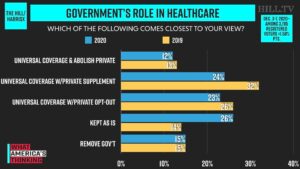A. P.’s Ben Nadler writes in “Turnout among young voters key to Georgia Senate runoffs: Georgia voters under 30 helped President-elect Joe Biden win the state. Democratic Senate candidates hope for similar results in January’s runoffs” at The Monitor: “In Georgia, people under 30 cast about 16% of the votes in the November election, compared with 13% nationwide, according to AP VoteCast. About six in 10 voters under 30 in Georgia backed Mr. Biden over Mr. Trump. But like voters overall, younger voters split starkly by race and ethnicity. Young nonwhite voters backed Mr. Biden overwhelmingly, with roughly eight in 10 supporting Democrats. Among young white voters, Mr. Trump was favored by about two to one.”…The push to connect with young voters has been especially apparent for the Democratic campaigns, which have more to gain from youth turnout – and more to lose if there’s a drop-off….Mr. Ossoff and Mr. Warnock have held rallies in college towns, invested in staff to help register and mobilize young voters, and engaged social media influencers to promote content and run ad campaigns on new media and digital platforms. They recently hosted a game night on Twitch, a livestreaming platform popular with young gamers. Mr. Ossoff also has made a push to connect with voters through TikTok, a video sharing app used by millions of U.S. teens.”
Here’s where Democrats really need to do much better in the Georgia U.S. Senate runoff elections, from “Turnout likely to be key in Georgia runoff election” by the Associated Press: “Early voting is lagging in Georgia’s smaller urban areas including Savannah, Augusta, Macon and Columbus, and Democratic vote totals have been disappointing in rural areas.” Democrats are strongest in the Atlanta metro area, and they showed dramatic improvement in the ‘donut’ surrounding Atlanta in the November presidential contest. Democrats showed some improvement in turnout in the exurbs north of Atlanta, including GA-7, the only red to blue House seat pick-up for Dems nation-wide in November. But Dems still lag badly in many rural counties, where winning 25 percent of the vote would be a significnt improvement.
At this point Democrats still have an good chance of winning both senate seats in the Georgia runoff election. But even if we don’t, SemDem’s “How to beat Mitch McConnell—even if we don’t win back the Senate” at Daily Kos has some interesting ideas, including: “As far as appointments go, Biden has a lot of options, as helpfully outlined by Washington Monthly. Obama paved the way for the appointment of nearly unlimited policy czars, and Biden also has the ability to appoint “acting” positions for more than 1,200 agency positions. (Trump managed to do it for other positions, as well.) Perhaps most interestingly, Biden can use the adjournment clause, in Article II, Section 3 of the Constitution, to force numerous recess appointments.” SemDem also cites examples of unilateral initiatives Biden can take with respect to the pandemic, including, but not limited to: (“appointing a “national supply chain commander” and establishing a “pandemic testing board”); putting photos on Social Security cards, which can serve as valid i.d. for voting; rejoining the Paris Climate Accords; forgive stuident loan debt or reduce the interest; eliminate Dreamer deportations and child caging; extend the ACA enrollment period; and “restoring government unions, breaking up monopolies, utilizing municipal lending instruments for better access to loans, and enacting Wall Street reform—just to name a few. The point is that Joe Biden can do a lot on his own, and if Georgia’s runoff goes sideways, he’d better get ready to do ‘em.”









